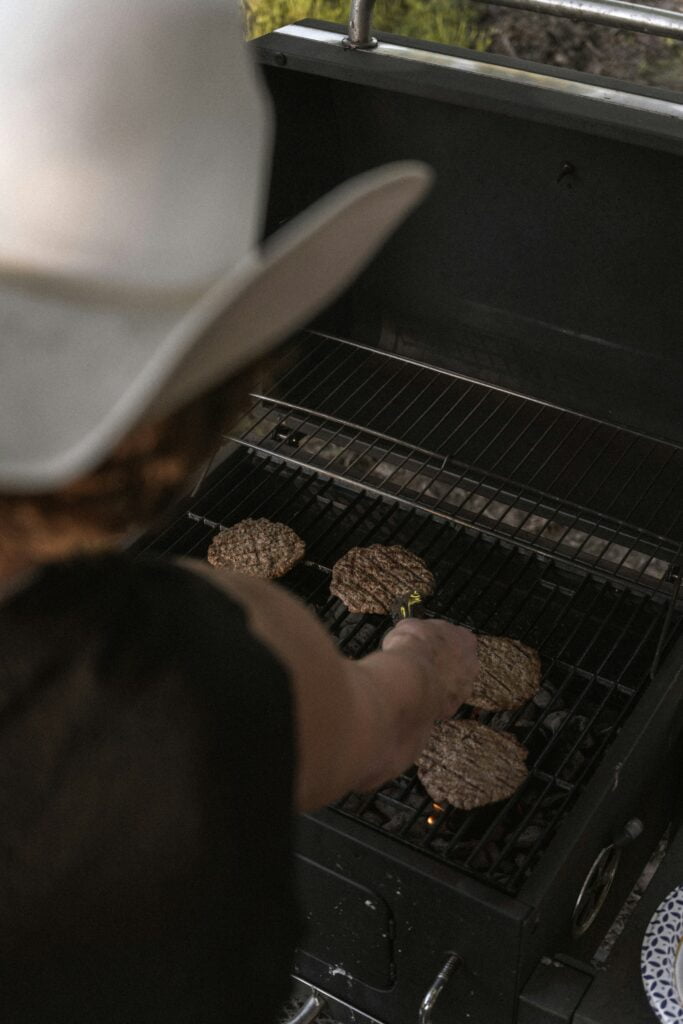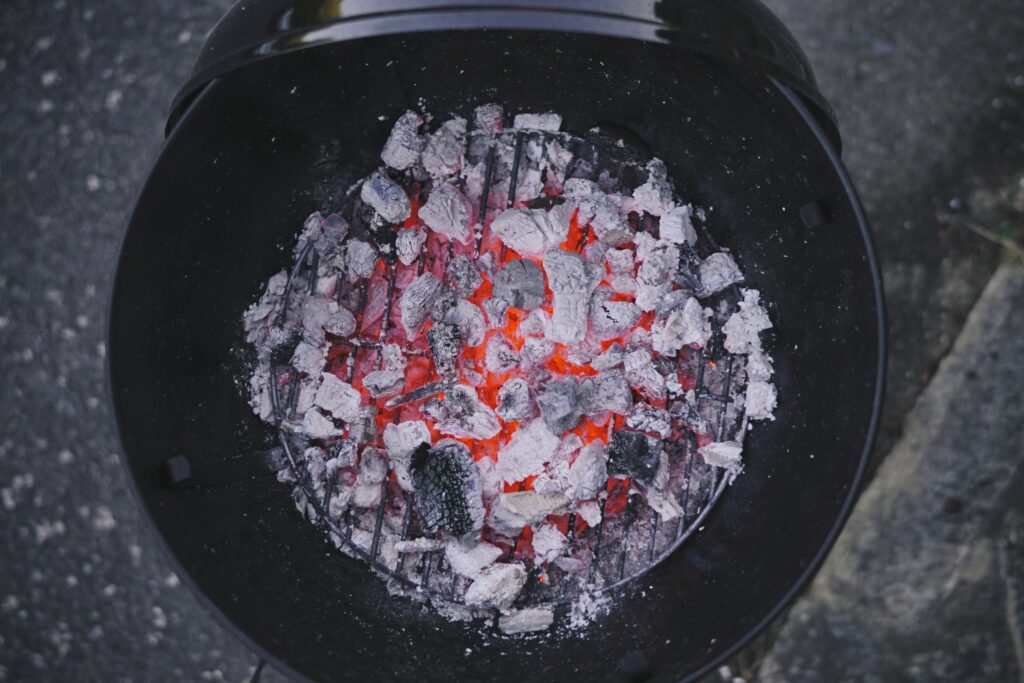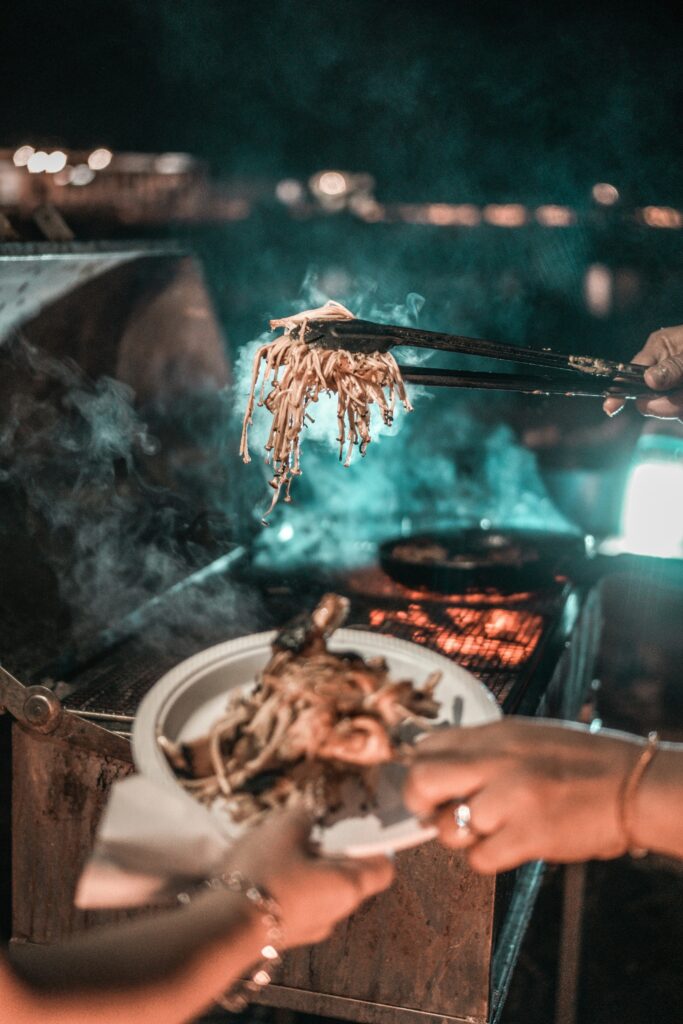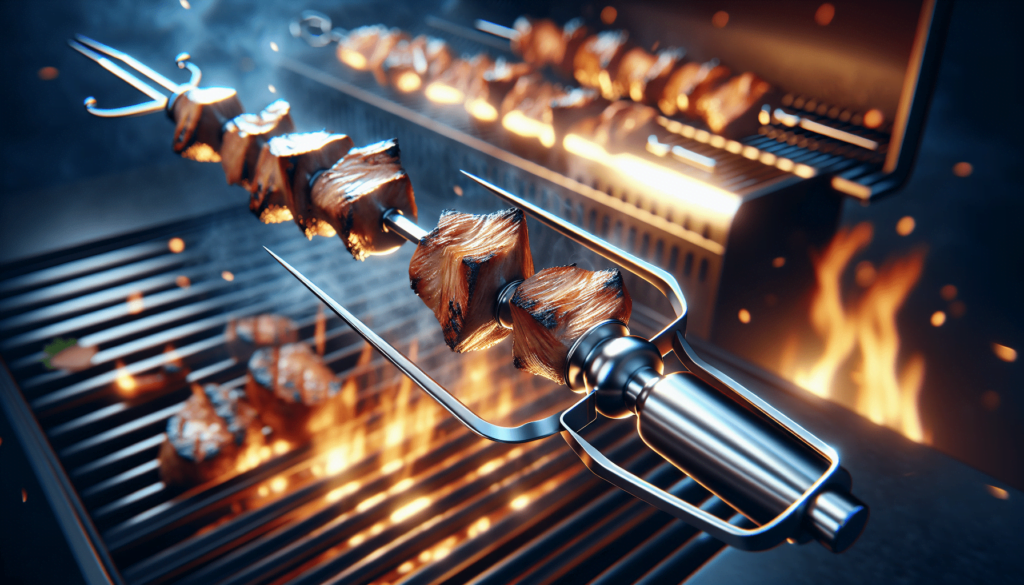Have you ever wondered what the function of a grill rotisserie fork is? If you’ve seen these accessories on display in a cookware store or attached to a grill, you might be curious about their purpose and how they can enhance your grilling experience. Let’s take a detailed look at what a grill rotisserie fork is, its function, and why it might just become your new favorite cooking tool.

Understanding the Basics: What Is a Grill Rotisserie Fork?
A grill rotisserie fork is a key component of a rotisserie cooking setup, designed to hold and stabilize food as it rotates over a heat source. These forks are typically made of metal and come with prongs that can securely grip various types of meat, vegetables, and even some fruits. By enabling food to rotate slowly and evenly, grill rotisserie forks ensure that your dishes are cooked beautifully, maintaining tenderness and succulent flavors.
Components of a Grill Rotisserie Fork
Before we dive deeper, let’s break down the key components:
- Prongs: Sharp, pointed ends that pierce food items, keeping them stable.
- Shaft or Rod: A metal rod that runs through the food, connected to the grill’s motor for rotation.
- Wing Nut or Screw: Mechanism to tighten and secure the prongs once the food is in place.
- Handle: Some models come with a handle for easy insertion and removal.
Why Rotation Matters
The primary function of a grill rotisserie fork is to facilitate even cooking through rotation. Unlike traditional grilling methods where food remains stationary and requires manual turning, rotisserie forks automate the process. This constant motion helps in distributing heat evenly, preventing dry spots, and ensuring each side of the food item gets equal attention from the heat source.
Types of Grill Rotisserie Forks
Not all grill rotisserie forks are created equal. There are different types, depending on your specific needs and the grill you own. Let’s discuss some common types to better understand their applications.
Standard Rotisserie Forks
Standard rotisserie forks are your basic, all-purpose forks that come with most rotisserie kits. They are versatile and can handle a variety of food items, from whole chickens to tougher cuts of meat.
- Best for: Chicken, pork roast, beef roast.
- Common materials: Stainless steel for durability and rust resistance.
Heavy-Duty Rotisserie Forks
Heavy-duty forks are designed for larger, bulkier pieces of meat. They are stronger and often have more prongs for added stability.
- Best for: Whole turkeys, hams, or any large cuts of meat.
- Common materials: Robust stainless steel or cast iron.
Small Basket Rotisserie Forks
Basket forks encompass small baskets that can hold smaller and more delicate items like vegetables, seafood, or smaller poultry. They offer a more secure grip for items that might slip off regular prongs.
- Best for: Vegetables, seafood, wings.
- Common materials: Stainless steel with a mesh or perforated basket.
Benefits of Using a Grill Rotisserie Fork
Now that you understand what a grill rotisserie fork is and the types available, let’s explore the advantages of incorporating one into your grilling routine.
Even Cooking
One of the primary benefits is the ability to evenly cook your food. The rotating motion ensures consistent heat exposure on all sides, resulting in uniform cooking.
Enhanced Flavor
A rotisserie fork helps in basting the food in its own juices, which enhances the flavor manifold. This self-basting feature is particularly beneficial for meats, which turn out more succulent and tastier.
Versatility
You’re not limited to just meats. The versatility of rotisserie forks allows you to experiment with a wide variety of foods, adding creativity to your cooking.
Time Efficiency
While it might seem counterintuitive, using a rotisserie fork can actually save you time. Since you don’t need to manually turn the food, you can focus on prepping other items or simply relax.
Healthy Cooking
The constant rotation helps in draining excess fat away from the meat, leading to healthier meals. Fat drips off rather than pooling around the meat, reducing overall fat content.
How to Use a Grill Rotisserie Fork
Using a grill rotisserie fork might seem intimidating if you’re a beginner, but once you get the hang of it, you’ll find it’s fairly straightforward. Follow these steps to ensure a fabulous grilling experience.
Step 1: Choose Your Food
Select the item you want to cook. Ensure that it fits well within your grill and rotisserie setup.
Step 2: Season and Prepare
Season your food as you normally would. If you’re cooking meat, truss it (tie it up with butcher’s twine) to ensure it stays compact and cooks evenly.
Step 3: Assemble the Fork
Insert the rod through the center of your food item. Slide the prongs into place on either side and secure them with wing nuts or screws. Make sure the food is firmly gripped.
Step 4: Attach to the Grill
Place the rod with the food attached into the rotisserie motor and align it properly. Make sure everything is balanced to avoid any wobbling during the cooking process.
Step 5: Start Cooking
Turn on the rotisserie motor and set up your grill at the desired temperature. Close the lid and let the rotisserie do its magic.
Step 6: Monitor and Adjust
While the rotisserie does most of the work, periodically check to ensure everything is running smoothly. Adjust the heat settings if necessary.
Step 7: Remove and Serve
Once your food is cooked to perfection, carefully remove the rod and forks. Let your food rest for a few minutes before serving.

Maintenance and Care
Taking good care of your grill rotisserie fork will ensure it lasts for many grilling seasons. Here are some tips on how to maintain and care for it.
Cleaning
Always clean the forks soon after use, while the residue is still fresh. Use warm soapy water and a brush to remove any stuck-on food. For crusted or burnt residue, soak the forks in warm water before scrubbing.
Rust Prevention
Dry the forks thoroughly after washing to prevent rust. If your forks are made of stainless steel, this should mostly take care of rust issues. However, a light coat of vegetable oil can provide additional protection.
Storage
Store the forks in a dry, cool place. Keeping them in a toolbox or hanging them ensures they stay in good working condition and avoids clutter.
Troubleshooting Common Issues
Even with the best equipment, you might encounter some issues. Here are common problems and how to solve them.
Imbalanced Rotation
If your food wobbles excessively, it’s likely unbalanced. Make sure to evenly distribute the weight along the rod. Truss your meat to ensure compactness.
Food Falling Off the Forks
Ensure the prongs are securely embedded in the food. Tighten the wing nuts or screws properly. For smaller items, consider using a basket rotisserie fork.
Uneven Cooking
If parts of your food are undercooked, check the heat source and make sure it’s consistent. Also, flipping the food midway (especially in case of very large items) can help achieve evenness.
Motor Troubles
Ensure your rotisserie motor is capable of handling the weight of your food. If the motor seems to strain, you might be overloading it. Consult your grill’s manual for weight limits.

Popular Recipes to Try with Your Grill Rotisserie Fork
Using a rotisserie fork opens up a world of culinary possibilities. Here are a few popular recipes to get you started.
Perfect Rotisserie Chicken
Ingredients:
- Whole chicken (3-4 lbs)
- Olive oil
- Salt and pepper
- Paprika
- Garlic powder
- Onion powder
- Thyme
Instructions:
- Rub the chicken with olive oil.
- Mix all the dry spices and season the chicken inside and out.
- Truss the chicken and place it on the rotisserie fork.
- Cook over medium heat for about 1.5 hours or until the internal temperature reaches 165°F.
Rotisserie Pork Roast
Ingredients:
- Pork loin (2-3 lbs)
- Salt and pepper
- Rosemary
- Garlic cloves (minced)
- Olive oil
Instructions:
- Rub the pork loin with olive oil.
- Season with salt, pepper, rosemary, and minced garlic.
- Secure the pork on the rotisserie fork.
- Roast at medium heat for about 1 hour or until internal temperature reaches 145°F.
Rotisserie Vegetables Basket
Ingredients:
- Mixed vegetables (Bell peppers, zucchini, squash, cherry tomatoes)
- Olive oil
- Salt and pepper
- Italian seasoning
Instructions:
- Toss vegetables with olive oil and seasoning.
- Place them in a rotisserie basket.
- Cook over medium heat for 30-45 minutes or until tender and slightly charred.
Conclusion
Understanding the function of a grill rotisserie fork can significantly elevate your grilling game. From ensuring even cooking to enhancing flavors and offering versatility, this humble tool offers numerous advantages. Whether you’re a grilling newbie or a seasoned pro, integrating a rotisserie fork into your grilling routine can bring out the best in your culinary endeavors. So, the next time you’re planning a barbecue, consider giving the rotisserie fork a whirl—you might just wonder how you ever did without it!


